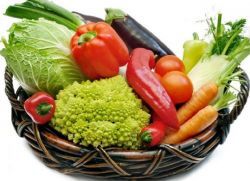For anybody not a secret that in order to lose weight, should eat less. If you fulfill this requirement – it is not bad. However, you need not just a little, you should also pay attention to the energy value of the product, i.e. the amount of calories. Calories for weight loss play a prominent role, because in this measure, it is measured how much energy we need for the requirements of our body for our daily activities. But in order to lose weight, you need to make the number of calories consumed is less than expended.
Where to start?

The first step is to calculate how many calories you need for the life of our body: circulation, respiration, growth, digestion etc. this will help us the formula of the basal metabolism (OO).
9.99 × weight + 6.25 × height – of 4.92 × age – 161
This is the formula approved by the American Association of Dietitians, allows you to accurately calculate the number of calories at rest.
Next, we calculate the required calories per day for our activities: work, sports, housework, etc.
Formula General power consumption:
The number obtained in the previous calculation is multiplied by a factor depending on your lifestyle:
- a sedentary lifestyle, x1,2;
- light exercise up to 3 times a week x1,37;
- workouts to 5 times per week x1,46;
- high intensity workout to 5 times a week x1,55;
- playing sports every day, x1,63;
- more intensive training every day or twice a day x1,72;
- hard physical labor or high-intensity classes more than two times a day x1 9.
The number that you get is the number of calories that you consume on a daily basis, not fearing to gain weight. However, we need the number of calories per day for weight loss. There are two ways to withdraw:
- Subtract 200-500 kcal of total energy consumption (WEM).
- Reduce kcal PLOW 15-20%.
The nutritionists strongly recommend not to reduce the number of kilocalories below the result of the General exchange formula (OO). This will contribute to slower metabolism and muscle damage.
Is there a difference between calories and calories?
The calories used in physics and in nutrition. 1 calorie in nutrition is 1 kg calories-kilocalories, which means the amount of energy required to heat 1 kg of water 1⁰ C. that is, in nutrition calories and kilocalories is the same! 1 Calorie = 1 kcal.
"Helpful" sources of calories
In order to lose weight, not only to reduce the amount of consumed calories, you need to find the right products that will not contribute to deposition of fat mass.
Breakfast:
For Breakfast, choose slow carbs:
- cereals;
- fruits;
- dried fruits;
- low-fat dairy products.

Porridge should be boiled in water, and after cooking you can add low fat cream. You can eat additional fruit or add to cereal dried fruit. In this case, note that the calories in dried fruits more than fruit counterparts (prune – plum, raisin – grapes, dried apricots, apricots, etc.), as fruit is filled with water, and in dried fruit it is not.
Lunch:
lean meat;- fish;
- vegetable salads;
- low-fat cheeses;
- vegetable oil;
- vegetable soups;
- legumes.
When I cook at home, do not be lazy to count calories ready meals. Get a scale, a calculator and a notebook, which will record the results of their calculations.
Dinner:
- slow carbohydrates (cereals and vegetables);
- low-fat cheese;
- boiled chicken breast;
- fish.
The last meal should be 3 hours before bedtime, otherwise all stored on your hips and stomach in the form of subcutaneous fat.
I hope you realize how interconnected the calories and your weight, and also the fact that both the first and second you can easily learn to control. The result will not keep itself waiting – after the first day of a balanced diet, you will feel cleaner, lighter and healthier.




























